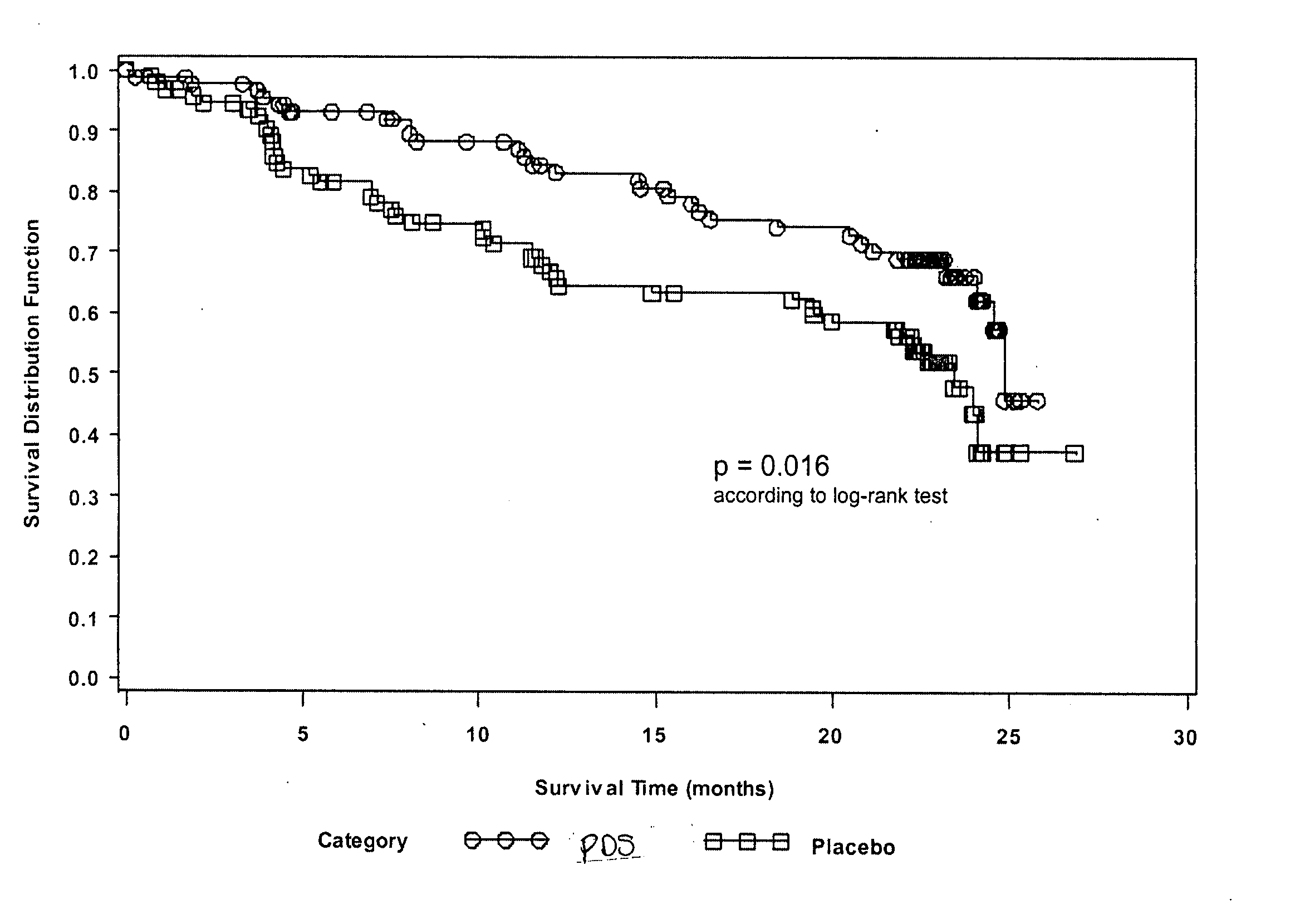Formulations and methods for treating amyloidosis
a technology of amyloidosis and formulations, applied in the field of formulations and methods for treating amyloidosis, to achieve the effect of decreasing the time to the at least 50% increase in creatinine clearance, and increasing the creatinine clearan
- Summary
- Abstract
- Description
- Claims
- Application Information
AI Technical Summary
Benefits of technology
Problems solved by technology
Method used
Image
Examples
example 1
[0245] An open-label, non-randomized, parallel group study to assess the pharmacokinetic profile of a single oral dose of 800 mg 1,3-propanedisulfonic acid disodium salt (PDS) in subjects with varying degrees of renal impairment as compared to healthy volunteers is conducted. Blood and urine samples are collected for 24 hours following dosing. Plasma and urine concentrations in 1,3-propanedisulfonic acid are determined using validated HPLC methods. Overall, renal impairment is associated with lower renal clearance and greater systemic exposure (characterized by AUC and Cmax) to PDS compared to healthy subjects. Consequently, a decrease in dose appears to be necessary to maintain an acceptable systemic exposure in patients with impaired renal function. Results are shown in Table 1.
TABLE 1Degree ofRenalGlomerular FiltrationCmaxTmaxAUC0-TlastAUC∞2ImpairmentRate (GFR)1(ng / mL)(h)(ng · h / mL)(ng · h / mL)Healthy >80 mL / min12400.53158 5367(n = 6) (511-2080)(0.25-0.75)(1276-5019)(2937-8582)M...
example 2
[0246] A multicenter, multinational, randomized, double-blind, placebo-controlled, and parallel-design study to assess the efficacy and safety of 1,3-propanedisulfonic acid disodium salt (PDS) in subjects having secondary (AA) amyloidosis is conducted. A total of 183 subjects are randomized to receive either PDS or placebo twice daily for 24 months. Dosing depends on the severity of renal impairment in a subject: subjects having creatinine clearance (ClCr) >80 mL / min receive 1200 mg BID; for ClCr between 30 and 80 mL / min, the subject receives 800 mg BID; and for ClCr between 20 and 30 mL / min and until the possible initiation of dialysis, the subject receives 400 mg BID. If ClCr decreases or increases to the next lower or higher range level, the dose regimen is adjusted accordingly. Subject medication is administered orally (capsule). Each patient is evaluated on 16 occasions, including on-site visits at months 0 (baseline), 1, 4, 8, 12, 16, 20 and 24.
[0247] Changes from baseline in...
example 3
Efficacy Analysis
[0250] All the statistical analyses will be based on the subject population as described. The “Safety population” will be the set of all subjects randomized to a treatment group who took at least one dose of the study drug (PDS). Subjects who were randomized during the screening period but did not meet one of the inclusion criteria at baseline and therefore did not take PDS will not be included in the Safety population. The “Intent-to-Treat (ITT) population” will consist of the Safety population, i.e., all subjects who are randomized and who have taken any amount of PDS. The “Efficacy Evaluable (per protocol; PP) population” will be a subset of the ITT subjects. It will consist of all subjects who complete the treatment period and can be assessed for the primary efficacy endpoint. It will exclude subjects under the following circumstances: initiation of angiotensin converting enzyme (ACE) inhibitor or angiotensin II receptor antagonist therapy during the study; us...
PUM
| Property | Measurement | Unit |
|---|---|---|
| Time | aaaaa | aaaaa |
| Mass | aaaaa | aaaaa |
| Mass | aaaaa | aaaaa |
Abstract
Description
Claims
Application Information
 Login to View More
Login to View More - R&D
- Intellectual Property
- Life Sciences
- Materials
- Tech Scout
- Unparalleled Data Quality
- Higher Quality Content
- 60% Fewer Hallucinations
Browse by: Latest US Patents, China's latest patents, Technical Efficacy Thesaurus, Application Domain, Technology Topic, Popular Technical Reports.
© 2025 PatSnap. All rights reserved.Legal|Privacy policy|Modern Slavery Act Transparency Statement|Sitemap|About US| Contact US: help@patsnap.com



